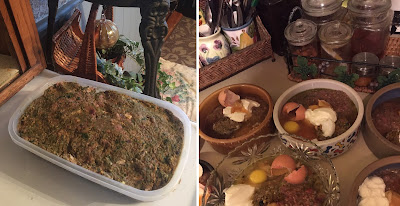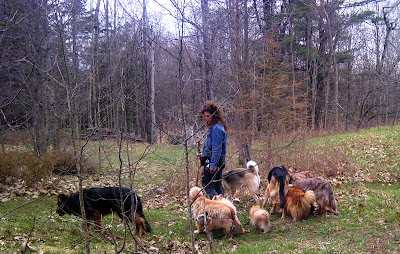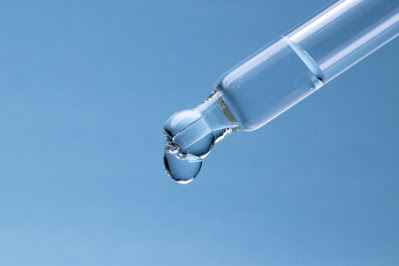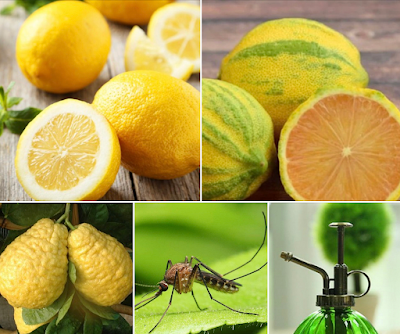Calcium Oxalate Crystals, Stones (Uroliths) in Dogs, Cats; Symptoms, Treatment, Diet, Prevention
★ 10 min read
In this article:
1.0 When It's an Emergency, and Not
- It's not an immediate emergency.
- You need to make an appointment ASAP.
- This is a life threatening emergency.
2.0 Signs Your Animal May Have Calcium Oxalate Stones
- Noticeable symptoms of CaOx stones.
- Symptoms that require testing to be 'seen'.
3.0 Calcium Oxalate Stones and Crystals, Cause and Treatment
- About CaOx Stones and Crystals
- Cause
- Breeds Most Prone
- Treatment
- Diet
4.0 About PH Levels
- The pH Scale
- Normal pH Level for Dogs and Cats
- At Home Monitoring of pH Levels
5.0 What Type of Diet Is Best for My Dog and Cat?
- So Many Dogs and Cats Get Calcium Oxalate Stones, Why?
- Inappropriate Diets
- Appropriate Diets
6.0 Fluids for Treatment and Prevention of Calcium Oxalate Stones
7.0 Dietary Tips to Treat and Prevent Calcium Oxalate Stones
Calcium oxalate (CaOx) stones can be a serious threat to a dog and cat’s health. If not treated and resolved stones can be life threatening.
If your dog has another type of stone (bladder or kidney stone):
- Go to this article.
1.0 When It's An Emergency, and Not
1. It's Not an Immediate EmergencyIf
your dog or cat has crystals or stones that are:
- Not completely blocking the uretha (your dog or cat is still able to urinate).
This is not an immediate emergency.
However, to ensure the condition does not advance further:
Action Required
- An appropriate dietary and natural medicinal protocol needs to be implemented as soon as possible.
2. You Need to Make an Appointment ASAP
If your dog or cat strains to urinate (no flow) and then passes a heavy flow of urine, your dog or cat may have just passed a stone.
If you can find the
stone, keep it and bring it to the veterinarian for analysis.
Whether you find the stone or not:
Action Required
- Call your veterinarian to schedule the earliest possible appointment, don't delay.
- If the diagnosis indicates, sediment, crystals or stones, an appropriate dietary and natural medicinal protocol needs to be implemented as soon as possible.
3. This IS A Life Threatening Emergency, Go NOW
If your dog or cat is not able to urinate at all, blockage is complete. This indicates that the urethra is completely plugged.
This is a life
threatening emergency.
Action Required
- Get your dog or cat to a veterinary clinic/hospital right away for emergency treatment.
- Once your dog or cat's situation has been stabilized and he's back home, an appropriate dietary and natural medicinal protocol needs to be implemented as soon as possible.
- Cause the urine to back-up into the urinary tract and cause kidney failure.
- Damage the bladder’s muscle tone thus creating incontinence.
- Stretch to the point of rupturing.
Failure to seek immediate emergency assistance can result in death of your dog or cat.
2.0 Signs, Symptoms of Calcium Oxalate Stones
2.1 Noticeable Symptoms of Calcium Oxalate Stones
Some dogs and cats will not exhibit outward signs. Others may exhibit one or more visible symptoms.
One or More Urinary Issues
for example:
- Blood in the urine also called hematuria, caused by crystals inflaming the lining of the bladder.
- Cloudy or foul smelling urine.
- Urine may be tinged red or burgundy in colour.
- Intermittent blood in the urine.
- Frequent urination.
- Straining to urinate, but often not passing any urine.
- Sudden on-set of whimpering and crying.
- Urinating in places that are not the normal place to urinate. Very noticeable in house-trained dogs.
- Pain when urinating, your dog may cry, yelp.
- Pain in the lower back or bladder area.
- Passing only a few drops of urine at a time.
- Puss in the urine.
- Straining to urinate, but often not passing any urine.
- Urinary tract infection.
for example:
- Increased thirst.
- Excessive licking of the genital area.
- Fever.
- Lethargy.
- Restlessness.
- Walking in crouched position.
- If a stone plugs the ureters – agitation, severe pain and straining – this is an emergency, you need to get to a veterinary clinic right away.
- If blockage occurs depression, vomiting and uremia (kidney also known as renal failure result).
for example, when
a stone plugs the ureters:
- Agitation.
- Severe pain and straining – this is an emergency, you need to get to a veterinary clinic right away.
- If blockage occurs depression, vomiting and uremia (kidney also known as renal failure).
2.2 Symptoms That Require Testing to be ‘Seen’
.1 Hypercalcemia
- Excessive calcium in the blood.
- Excessive calcium in the urine.
- Excessive oxalate in the urine.
3.0 Calcium Oxalate Stones and Crystals, Cause and Treatment
How do you...
- Prevent CaOx crystals from forming into stones?
- Dissolve existing CaOx stones that are not currently causing blockage?
- Prevent stones forming again in the future?
By...
- Naturally and holistically addressing the situation with a species appropriate diet and supplemental treatment plan tailored to the individual dog and cat's circumstances.
3.1 Calcium Oxalate (CaOx) Stones and Crystals
- Calcium oxalate crystals and stones occur in the upper urinary tract (the kidneys) and the lower urinary tract (the bladder).
- CaOx stones are one of the most common types of stones that occur in domestic dogs and cats.
- Most CaOx stones are found in the kidneys.
- Small breed male dogs are most affected by this type of stone.
- CaOx stones may be seen by x-ray.
- Species inappropriate diet.
- Insufficient daily exercise.
- Neutered.
- Overweight
- Is on conventional medications, for example:
- Corticosteroids
- Furosemide
- Cushing's Disease
- Hypercalcemia (excess calcium in the blood).
- Hyperparathyroidism.
- Bichon Frise
- Cairn Terrier
- Chihuahua
- Dachshund
- Keeshond
- Lhasa Apso
- Miniature and Toy Poodle
- Miniature and Standard Schnauzer
- Maltese
- Mixed breed
- Parson Russell Terriers
- Papillions
- Pomeranians
- Samoyeds
- Shih Tzus
- West Highland Terriers
- Yorkshire Terriers
- The dog or cat needs to be transitioned to a species appropriate raw or gently cooked diet and supplemental plan tailored to the individual animal's circumstances.
- Stones that are not growing or causing problems (clinically inactive), will resolve with proper natural treatment.
- For males with reoccurring stones, the issue can be resolved with a proper natural protocol.
- If the root cause of stone formation is exacerbated by a disease condition such as Cushing’s or Hypercalcemia, the root cause should be addressed with natural treatment.
- A species appropriate raw or gently cooked and fresh food diet tailored to suit the individual animal's circumstances.
- The diet needs to be alkalized.
- The diet should be rich in low-oxalate foods.
- The diet should not be protein restrictive.
4.0 About pH Levels
Very Acidic Neutral Very Alkaline
4.1 The pH Scale
An Acidic pH
An acidic pH is:
a pH that is less than 7.0
A Neutral pH
A neutral pH is:
7.0 pH
An Alkaline pH
An alkaline pH is:
a pH that is greater than 7.0 pH 4.2 Normal pH Level for Dogs and Cats
The Healthy Dog or Cat
Parasites, inflammation and disease thrive in an acidic environment.
4.3 At-Home Monitoring of pH
If your dog or cat has urinary tract stones, it's a good idea to monitor pH level until the isues has been treated and resolved.
A healthy dog or cat has a neutral to slightly acidic urinary and blood pH level.
Ranges in between 5.5 to 7.0 are considered normal.
Dogs and cats fed a species appropriate raw or gently cooked and fresh food diet typically have a pH between 6 and 6.5 – close to neutral.
The Vulnerable Dog or Cat
Dogs
and cats that are fed a dry food diet typically
have a pH level that is in the lower range of ‘normal’. Their pH level is
more acidic than it should be.
Parasites, inflammation and disease thrive in an acidic environment.
Dogs and cats with acidified pH levels
below normal are highly vulnerable to health issues, disease and parasite
infestations.
4.3 At-Home Monitoring of pH
If your dog or cat has urinary tract stones, it's a good idea to monitor pH level until the isues has been treated and resolved.
You can purchase a pH testing kit from a pharmacy.
To Ensure An Accurate Reading
- Do the pH test in the morning prior to feeding your dog or cat.
- Fresh urine must be used for the test;
- For dogs:
- Hold the pH strip in the urine stream, or collect a small amount of urine in a container. Then dip the pH strip into the container.
- For cats:
- You may need to devise a special litter box in order to catch some of the urine in a second container underneath the normal litter box.
5.0 What Type of Food is Best For My Dog or Cat?
5.1 So Many Dogs and Cats Get Calcium Oxalate Stones, Why?
Diet, diet diet.
Diet, diet diet.
The majority of dogs and cats experience calcium oxalate stones due to inappropriate diet.
A small percentage of dogs and cats:
- Have a genetic predisposition which can cause the formation of stones.
- Have a health condition such as Cushing's, which makes a dog more vulnerable to formation of stones.
A dog with Cushing's is at very low risk of experiencing stones if:
- Fed a species appropriate raw or gently cooked and fresh food.
- Naturally treated for Cushing's symptoms (not treated with corticosteroids and other conventional drugs).
5.2 Inappropriate Diets, Stone Forming Diets
5.2.1 Dry Pet Food Diets
All dry food diets are inappropriate. There is no exception.
This
includes veterinary prescriptions diets. Veterinary prescription diets
are among the worst products. They're formulated to mask one or several
symptoms, not treat and remedy. They're formulated to cause a cascade of
additional health issues over-time.
Standard ingredients in veterinary prescription dry (and wet) food diets include:
a partial list...
Condemned Denatured:
Meat, fat and derivatives sourced from dead, diseased, dying and disabled animals. Denatured with toxic denaturing agents.
- Learn more here.
Euthanized Dogs and Cats:
The bodies (meat, fat, etc.) of euthanized dogs and cats.
- Learn more here.
Starchy Carbohydrates:
Stone forming, disease causing.
- Learn more here.
Toxic Preservatives:
- Learn more here.
Other Toxic Food Additives, including:
Toxic salt
- Learn more here.
Toxic synthetic minerals
- Learn more here.
Toxic flavoring.
- Learn more here.5.2.2 Wet Pet Food Diets
All wet food diets
- inappropriate, this includes veterinary prescriptions diets.
- issues with most wet foods are the same as dry foods, as noted above.
5.2.3 Air Dried, Freeze Dried, Dehydrated Pet Food
Most air dried, freeze dried and dehydrated pet food contains inappropriate components. For example:
- Starchy carbohydrates.
- Food additives.
A small number of products don't contain inappropriate components. Those products are fine for:
- Temporary use in an emergency.
- Not for daily-long-term use as the main diet.
Many commercial and homemade raw diets or gently cooked diets are NOT species appropriate. These diets are stone forming.
An inappropriate raw or gently cooked diet includes components such as:
- grains, beans, starchy root vegetables.
- poorly sourced animal proteins, fats, bones.
- synthetic food additives.
5.2.5 AAFCO
Certified Pet Food
Lean more about AAFCO here.
AAFCO is a non-governmental organization consisting of animal feed lobbyists and
manufacturers.
AAFCO certification requires food products to contain a vast number of inappropriate food-additives.
AFFCO
permits toxic and carcinogenic food components in dog and cat food. For
examples see the list of items noted under 'Dry Food' further above.
5.3 Appropriate Diets
An appropriate diet for your dog or cat is...
5.3.1 Raw Food Diet
A raw food diet made with species appropriate food that has been tailored to suit your individual dog or cat's circumstances.
5.3.2 Gently Cooked and Fresh Food Diet
A
gently cooked and fresh food diet made with species appropriate food
that has been tailored to suit your individual dog or cat's
circumstances.
A species appropriate raw diet is the best diet for your dog and cat.
Unless your dog or cat self-selects a species appropriate gently cooked and fresh food diet.
6.0 Fluids For Treatment and Prevention of Calcium Oxalate Stones and Crystals
Fluids help your dog and cat's urinary and renal system flush-out debris, including crystal forming substances.
Offer a variety of appropriate fluids. This will encourage your animal to drink and provides opportunity for your animal to self-select fluids that best suit him.
6.1 Water
Make sure your dog or cat always has a bowl of fresh water to drink from.Dogs and cats with formed stones should be given distilled water.
Once
the stones are dissolved and your dog or cat is on a raw or gently
cooked diet tailored to their situation, distilled water should be
replaced with filtered water or spring water.
6.2 Bone Broth or Short Cooked Broth
Bone Broth
- For the recipe
- Health benefits
- Serving guidelines
Go to this article.
Short Cooked Broth
- For the recipe
- Health benefits
- Serving guidelines
Go to this article.
6.3 Fresh Lemon Juice
Offer
fresh lemon juice in a second water bowl beside your dog or cat's
normal water bowl. If your dog or cat self-selects the lemon water you
can also add some fresh lemon juice to their food.
Fresh lemon juice helps balance blood and urinary pH levels.
Fresh
lemon juice (or fresh lemon pulp with juice) is more effective than
potassium citrate for reducing urinary calcium levels and increasing
urinary output.
Learn more about:
- Health benefits and uses of fresh lemon
- Serving recommendations
Go to this article.
6.4 Tart Red Cherry Juice
Tart red cherries contain an antioxidant compound called anthocyanins. These compounds reduce inflammation and pain. Comparable to well known pain medications such as aspirin.
Learn more about tart red cherry:
- Health benefits
- Appropriate products
- Daily dosage for dogs and cats
Go to this article.
6.5 Cranberry Juice
You can offer your dog or cat cranberry juice.
Use pure, organic cranberry juice.
Cranberry helps prevent bacteria from attaching to the lining of the stomach and urinary tract.
Cranberries also contain the anti-inflammatory antioxidants.
7.0 Dietary Tips To Treat and Prevent Calcium Oxalate Stones and Crystals
8.1 Tips for Calcium Phosphate Stones and
CaOx Stones
7.1.1 The Research
Further research showed that the former approach was wrong. Restricting dietary phosphorous increased calcium absorption thereby increasing the risk of stone formation.
Low Oxalate foods can be included in unrestricted amounts.
Animal Proteins
examples:
Years ago it was thought that a diet of restricted protein and
phosphorous was key to reducing the risk of Calcium Oxalate stones (CaOx
stones). However this approach is outdated and, incorrect.
Further research showed that the former approach was wrong. Restricting dietary phosphorous increased calcium absorption thereby increasing the risk of stone formation.
Higher levels of protein reduced risk of kidney stones.
Research has proven dogs and cats that are prone to forming CaOx stones:
Blackberries, blueberries, clementines, mandarins, oranges.
Vegetables
Carrots, celery
Research has proven dogs and cats that are prone to forming CaOx stones:
- Should not be on a diet that restricts calcium, phosphorous or protein;
- Should not be on a diet that is high in carbohydrates;
- Should be on a diet that is high in good quality protein, fat, calcium, phosphorus, magnesium, and moisture/liquid.
7.1.2 Dietary Tips
Moderate oxalate foods can be included in moderate amounts.
FruitBlackberries, blueberries, clementines, mandarins, oranges.
Vegetables
Carrots, celery
Low Oxalate foods can be included in unrestricted amounts.
Animal Proteins
examples:
- beef, bison, lamb.
- chicken, turkey, duck.
- mackerel, salmon, sardines.
- chicken, turkey, duck.
- mackerel, salmon, sardines.
- egg.
Dairy
Raw goat milk, kefir, yogurt.
Raw goat milk, kefir, yogurt.
Seeds
Coconut, flax seeds (ground), sunflower seeds.
Fruit
Apple, apricot, banana, cherries, cranberries, lemon, melons (all types), nectarine, papaya, passion fruit, peach, pear, pineapple, plum, raspberries, strawberries, Saskatoon berries, thimble berries.
Vegetables
Asparagus, broccoli and broccoli sprouts, Brussels sprouts, cabbage (and fresh sauerkraut), cauliflower, cucumber, lettuce – romaine, red leaf, green leaf, frizzy, radicchio; kelp, zucchini.
Coconut, flax seeds (ground), sunflower seeds.
Fruit
Apple, apricot, banana, cherries, cranberries, lemon, melons (all types), nectarine, papaya, passion fruit, peach, pear, pineapple, plum, raspberries, strawberries, Saskatoon berries, thimble berries.
Vegetables
Asparagus, broccoli and broccoli sprouts, Brussels sprouts, cabbage (and fresh sauerkraut), cauliflower, cucumber, lettuce – romaine, red leaf, green leaf, frizzy, radicchio; kelp, zucchini.
Holistic Diet, Nutrition, Wellness Services Tailored to Your Individual Dog and Cat
For information about my holistic diet, nutrition and wellness services, visit my holistic wellness services page.
Maintain good health | Address acute and chronic health issues | Pre and post surgery support and recovery
My holistic wellness services are available worldwide via video consultation.
🌎 USA | Canada | UK | Europe | Australia | New Zealand | Asia | South and Central America | Africa | UAE
📱FaceTime | Facebook | Skype | WhatsApp
To set-up your holistic wellness consultation get in-touch via email, go to my contact me page.
Holistic Behavioral Services for Your Dog
For information about my holistic behavioral services, visit my holistic behavioral services page.
For dogs of all ages, sizes and breeds.
My behavioral services are available worldwide via video consultation.
🌎 USA | Canada | UK | Europe | Australia | New Zealand | Asia | South and Central America | Africa | UAE
📱FaceTime | Facebook | Skype | WhatsApp
To set-up your holistic behavioral session get in-touch via email, go to my contact me page.
Affiliations to Companies
✓ None.
✓ I don't sell food, supplements, or other products.
✓ I'm not aligned with any companies.
Article and graphics by Karen Rosenfeld.











